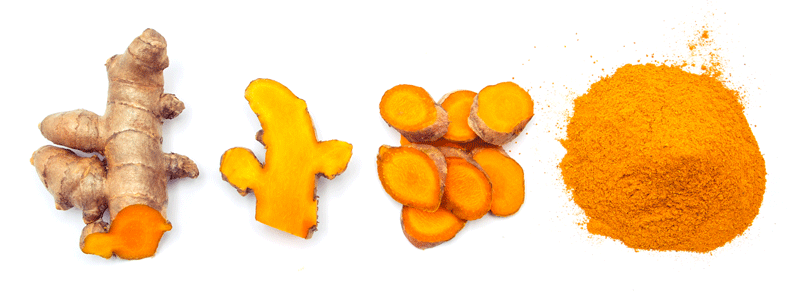Turmeric adds vital ingredient to fuel cells
A catalyst made from turmeric and gold needs 100 times less energy to convert ethanol into electricity, claims a team from Clemson Nanomaterials Institute, USA, and the Sri Sathya Sai Institute of Higher Learning in India.

Curcumin – a substance in turmeric – stabilises the catalysing gold nanoparticles by forming a porous network around them. Without the coating, the gold nanoparticles agglomerate reducing the exposed surface area.
Researchers Professor Apparao M. Rao and Lakshman K. Ventrapragada from Clemson explain, ‘During electrodeposition, the gold ions generated from the gold anode bind to the curcumin molecules in the electrolyte, forming a complex. This complex is then deposited on the cathode, wherein the gold nanoparticles remain encased in the porous curcumin network, thus forming the gold-curcumin nanocomposite.
‘The porous framework of curcumin around the gold nanoparticles provides stability and pathways for the movement of sensing molecules or electroactive analytes to the active site on the electrode surface.’
The electrode coated with the gold-curcumin nanocomposite oxidises the dopamine molecules and the oxidation current response is then measured.
The weight of the composite deposited onto the glassy carbon electrode is around 0.1mg containing 0.085mg gold (85%) and 0.015mg of curcumin (15%). The researchers explain, ‘Our synthesis was carried out in an energy-efficient manner by using 100-1,000 times lower current than earlier reports. Current densities of 1.46 and 0.49mA cm-2 were generated by the electrocatalytic oxidation of ethanol and methanol, respectively.’
Ventrapragada notes, ‘To make it a commercial product where we can fill our tanks with ethanol, the electrodes have to be highly efficient.
‘At the same time, we don’t want very expensive electrodes or synthetic polymeric substrates that are not eco-friendly because that defeats the whole purpose. We wanted to look at something green for the fuel cell generation process and making the fuel cell itself.’
The researchers focused on the fuel cell’s anode, where the ethanol or other feed source is oxidised. Although platinum is a conventional catalyst, the research team point to issues with reaction intermediates such as carbon monoxide and the high cost of the metal.
They continue, ‘On the lab scale, the cost of the deposited gold-curcumin material is very low (~US$0.0065). Our research findings are at a very early stage and, therefore, it is difficult to make definite cost estimates. But based on the market knowledge, one can expect the gold-curcumin electrode to be at least 50% lower cost than commercial electrodes.
The researchers are also exploring other molecules as a substitute for curcumin to further improve the efficiency of the electrochemical deposition, and note that curcumin can stabilise other materials – they have experimented with copper as a replacement for gold.
‘Molecules with similar functional groups as curcumin and gold electronic structure can be explored that can enhance the efficiency of the gold nanoparticle complexing and deposition, and consequently the oxidation of alcohols,’ say Rao and Ventrapragada.
They plan to use alternative substrates to scale up the process for mass production and are testing the gold-curcumin electrode for other electrocatalytic applications, such as a sensor to identify changes in dopamine levels linked to disorders such as Parkinson’s disease and attention deficit hyperactivity disorder.
Rao adds, ‘There’s a big push in the industry for alcohol oxidation. This discovery is an excellent enabler for that. The next step is to scale the process up and work with an industrial collaborator who can actually make the fuel cells and build stacks of fuel cells for the real application.’

